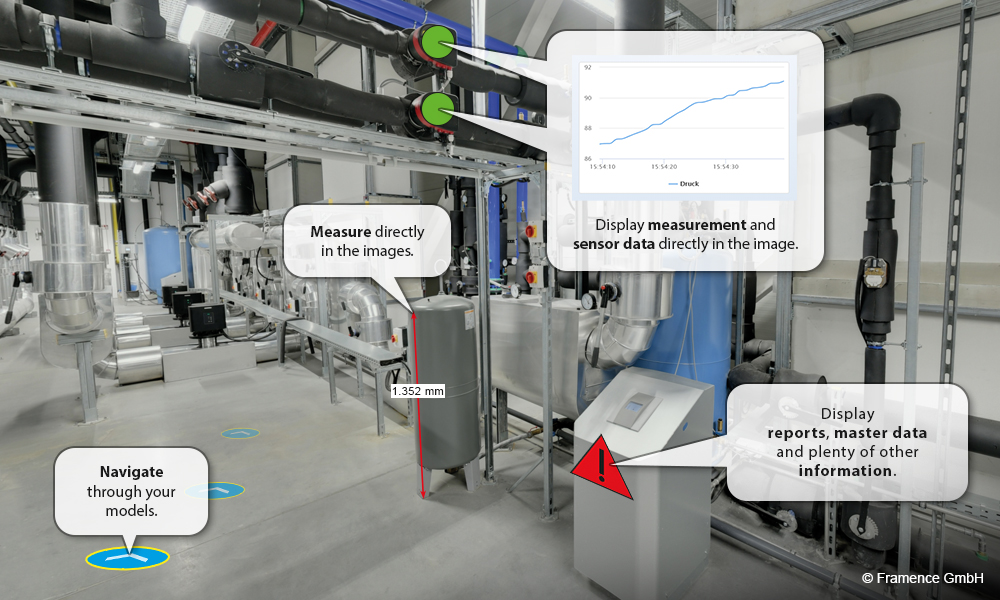Digital Twins of buildings, assets and technical installations can yield a significant benefit not only for the daily operations but also for planning und documentation purposes. Having all the necessary information accessible in one place leads to optimize processes, quicker decision making and a reduction in time and money spent.
It is vital that all the data and information contained in the digital twin are up-to-date and correct, otherwise the twin will not yield the potential benefits. An outdated digital twin is simply a waste of money. In many cases, existing 3D- or BIM-models are used as the basis for a later digital twin. This approach is a good start but not enough. This is due to the fact the for most assets, there are simply no 3D models available that you could rely on. And if there is a model, often there is no data contained in it. In addition, the ongoing changes due to maintenance, modifications or reconstruction are usually not updated in the model.



